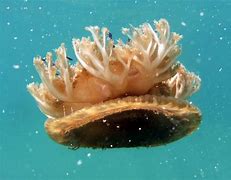Jellyfish



Jellyfish are fascinating creatures that belong to the phylum Cnidaria, which also includes corals and sea anemones. Here are some interesting facts about jellyfish:
Anatomy: Jellyfish have a gelatinous, umbrella-shaped body known as a bell. The bell is typically translucent or transparent, allowing light to pass through. Hanging from the center of the bell is a structure called the manubrium, which contains the mouth. Long, trailing tentacles extend from the bell, which are used for capturing prey and defense.
Stinging Cells: Jellyfish possess specialized cells called cnidocytes, located on their tentacles and other body parts. These cells contain harpoon-like structures called nematocysts that inject venom into their prey or potential threats. The venom helps paralyze or immobilize prey and serves as a defense mechanism against predators.
Lifecycles: Jellyfish have complex lifecycles that typically include both a medusa stage (the familiar bell-shaped form) and a polyp stage. The polyp stage involves a stationary, tube-like structure attached to a substrate, such as rocks or corals. During the medusa stage, jellyfish are free-swimming and reproduce sexually. They release eggs or sperm into the water, and fertilization occurs externally.
Diversity: There are thousands of jellyfish species, varying in size, shape, and color. They can range from tiny, nearly invisible organisms to large species with bells measuring several feet in diameter. Some well-known species include the moon jellyfish, box jellyfish, lion’s mane jellyfish, and Portuguese man o’ war.
Habitat and Distribution: Jellyfish are found in oceans worldwide, from the surface waters to the deep sea. They are most commonly encountered in coastal areas, but they can be found in all marine environments. Some species are adapted to specific habitats, such as the moon jellyfish, which prefers calm, nearshore waters, while others are known to inhabit the open ocean.
Feeding Behavior: Most jellyfish are carnivorous and primarily feed on small aquatic organisms such as plankton, fish larvae, and other small invertebrates. They use their tentacles to capture prey, paralyze them with their venomous cells, and then bring the prey to their mouths for digestion. Some jellyfish are opportunistic feeders and can even consume other jellyfish species.
Environmental Importance: Jellyfish play important ecological roles in marine ecosystems. They are both predator and prey, and their population dynamics can have cascading effects on food webs. They also serve as indicators of ecosystem health, as some species are more abundant in areas with certain environmental conditions, such as low oxygen levels or pollution.